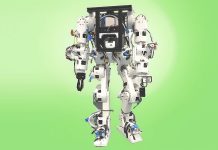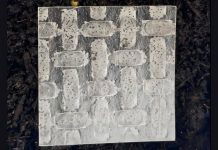
Researchers Indrek Must and Kadri-Ann Valdur from the University of Tartu have developed a remarkable new robot leg that mimics the leg of a cucumber spider.
Created in collaboration with the Italian Institute of Technology, this soft robot has the potential to move into places where humans cannot.
In nature, fluids play a crucial role in connecting organs, blood vessels, and the musculoskeletal system.
For spiders, a blood-like fluid called hemolymph helps activate muscles and provide flexibility to their exoskeleton.
Inspired by the cucumber spider found in Estonia, scientists designed a complex soft robot that combines soft and rigid parts, all connected by a liquid.
Indrek Must, Associate Professor of Soft Robotics, explained the purpose behind the project.
“Our goal is to build systems from both natural and artificial materials that are as effective as those found in nature. The robotic leg can touch delicate objects and navigate complex environments just like a living spider,” he said.
The researchers published their findings in the journal Advanced Functional Materials, showcasing how the robotic leg can interact with tiny and delicate structures such as a primrose stamen, a spider web, and a pollen grain.
This demonstrates the robot’s ability to handle small, fragile objects without causing damage.
The robotic leg is tiny, about the size of a little fingernail. It consists of an exoskeleton made from light-curing resin and an artificial muscle made of polypyrrole. Similar to a natural muscle, the soft robot is activated by an electrical signal.
The entire exoskeleton is filled with an electrolyte solution that surrounds a stiffer tendon made of resin and the electroactive polymer muscle.
This solution behaves like the hemolymph in spiders, enhancing the flexibility of the exoskeleton and enabling the leg to move as the polymer changes shape.
Soft robotics takes inspiration from nature, and this technology holds great promise for the future. Such robots could operate in environments where humans cannot go, such as moving inside the human body as nanorobots during surgery or searching for survivors in disaster areas.
This breakthrough in soft robotics shows how combining natural inspiration with advanced technology can lead to innovative solutions. The soft robot leg’s ability to navigate delicate and complex environments opens up exciting possibilities for the future of robotics.
Source: KSR.



